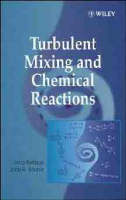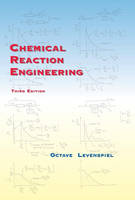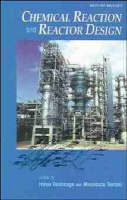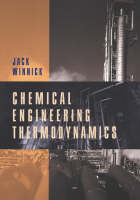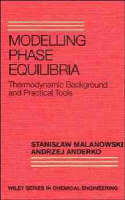Handbook of Industrial Mixing
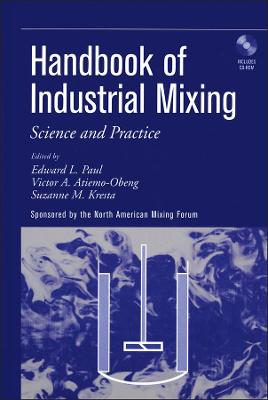 -15%
portes grátis
-15%
portes grátis
Handbook of Industrial Mixing
Science and Practice
Atiemo-Obeng, Victor A.; Kresta, Suzanne M.; Paul, Edward L.
John Wiley & Sons Inc
12/2003
1440
Inglês
9780471269199
15 a 20 dias
1878
1. Residence Time Distributons (E. Nauman).
1.1 Introduction.
1.2 Measurements and Distribution Functions.
1.3 Residence Time Models of Flow Systems.
1.4 Uses of Residence Time Distributions.
1.5 Extensions of Residence Time Theory.
2. Turbulence in Mixing Applications (S. Kresta and R. Brodkey).
2.1 Introduction.
2.2 Background.
2.3 Classical Measures of Turbulence.
2.4 Dynamics and Averages: Reducing the Dimensionality of the Problem.
2.5 Modeling the Turbulent Transport.
2.6 What Have We Learned?
3. Laminar Mixing: A Dynamical Systems Approach (E. Szalai, et al.).
3.1 Introduction.
3.2 Background.
3.3 How to Evaluate Mixing Performance.
3.4 Physics of Chaotic Flows Applied to Laminar Mixing.
3.5 Applications to Physically Realizable Chaotic Flows.
3.6 Reactive Chaotic Flows.
3.7 Summary.
3.8 Conclusions.
4. Experimental Methods.
Part A: Measuring Tools and Techniques for Mixing and Flow Visualization Studies (D. Brown, et al.).
4.1 Introduction.
4.2 Mixing Laboratory.
4.3 Power Draw or Torque Measurement.
4.4 Sincle-Phase Blending.
4.5 Solid-Liquid Mixing.
4.6 Liquid-Liquid Dispersion.
4.7 Gas-Liquid Mixing.
4.8 Other Techniques.
Part B: Fundamental Flow Measurement (G. Papadopoulos and E. Arik).
4.9 Scope of Fundamental Flow Measurement Techniques.
4.10 Laser Doppler Anemometry.
4.11 Phase Doppler Anemometry.
4.12 Particle Image Velocimetry.
5. Computational Fluid Mixing (E. Marshall and A. Bakker).
5.1 Introduction.
5.2 Computational Fluid Dynamics.
5.3 Numerical Methods.
5.4 Stirred Tank Modeling Using Experimental Data.
5.5 Stirred Tank Modeling Using the Actual Impeller Geometry.
5.6 Evaluating Mixing from Flow Field Results.
5.7 Applications.
5.8 Closing Remarks.
6. Mechanically Stirred Vessels (R. Hemrajani and G. Tatterson).
6.1 Introduction.
6.2 Key Design Parameters.
6.3 Flow Characteristics.
6.4 Scale-up.
6.5 Performance Characteristics and Ranges of Application.
6.6 Laminar Mixing in Mechanically Stirred Vessels.
7. Mixing in Pipelines (A. Etchells III and C. Meyer).
7.1 Introduction.
7.2 Fluid Dynamic Modes: Flow Regimes.
7.3 Overview of Pipeline Device Options by Flow Regime.
7.4 Applications.
7.5 Blending and Radial Mixing in Pipeline Flow.
7.6 Tee Mixers.
7.7 Static or Motionless Mixing Equipment.
7.8 Static Mixer Design Fundamentals.
7.9 Multiphase Flow in Motionless Mixers and Pipes.
7.10 Transitional Flow.
7.11 Motionless Mixers: Other Considerations.
7.12 In-line Mechanical Mixers.
7.13 Other Process Results.
7.14 Summary and Future Developments.
8. Rotor-Stator Mixing Devices (V. Atiemo-Obeng and R. Calabrese).
8.1 Introduction.
8.2 Geometry and Design Configurations.
8.3 Hydrodynamics of Rotor-Stator Mixers.
8.4 Process Scale-up and Design Configurations.
8.5 Mechanical Design Considerations.
8.6 Rotor-Stator Mixing Equipment Suppliers.
9. Blending of Miscible Liquids (R. Grenville and A. Nienow).
9.1 Introduction.
9.2 Blending of Newtonian Fluids in the Turbulent and Transitional Regimes.
9.3 Blending of Non-Newtonian, Shear-Thinning Fluids in the Turbulent and Transitional Regimes.
9.4 Blending in the Laminar Regime.
9.5 Jet Mixing in Tanks.
10. Solid-Liquid Mixing (V. Atiemo-Obeng, et al.).
10.1 Introduction.
10.2 Hydrodynamics of Solid Suspension and Distribution.
10.3 Measurements and Correlations for Solid Suspension and Distribution.
10.4 Mass Transfer in Agitated Solid-Liquid Systems.
10.5 Selection, Scale-up, and Design Issues for Solid-Liquid Mixing Equipment.
11. Gas-Liquid Mixing in Turbulent Systems (J. Middleton and J. Smith).
11.1 Introduction.
11.2 Selection and Configuration of Gas-Liquid Equipment.
11.3 Flow Patterns and Operating Regimes.
11.4 Power.
11.5 Gas Hold-up or Retained Gas Fraction.
11.6 Gas-Liquid Mass Transfer.
11.7 Bubble Size.
11.8 Consequences of Scale-up.
12. Immiscible Liquid-Liquid Systems (D. Leng and R. Calabrese).
12.1 Introduction.
12.2 Liquid-Liquid Dispersion.
12.3 Drop Coalescence.
12.4 Population Balances.
12.5 More Concentrated Systems.
12.6 Other Considerations.
12.7 Equipment Selection for Liquid-Liquid Operations.
12.8 Scale-up of Liquid-Liquid Systems.
12.9 Industrial Applications.
13. Mixing and Chemical Reactions (G. Patterson, et al.).
13.1 Introduction.
13.2 Principles of Reactor Design for Mixing-Sensitive Systems.
13.3 Mixing and Transport Effects in Heterogeneous Chemical Reactors.
13.4 Scale-up and Scale-down of Mixing-Sensitive Systems.
13.5 Simulation of Mixing and Chemical Reaction.
13.6 Conclusions.
14. Heat Transfer (W. Penney and V. Atiemo-Obeng).
14.1 Introduction.
14.2 Fundamentals.
14.3 Most Cost-Effective Heat Transfer Geometry.
14.4 Heat Transfer Coefficient Correlations.
14.5 Examples.
15. Solids Mixing.
Part A: Fundamentals of Solids Mixing (F. Muzzio, et al.).
15.1 Introduction.
15.2 Characterization of Power Mixtures.
15.3 Theoretical Treatment of Granular Mixing.
15.4 Batch Mixers and Mechanisms.
15.5 Selection and Scale-up of Solids Batch Mixing.
15.6 Conclusions.
Part B: Mixing of Particulate Solids in the Process Industries (K. Manjunath, et al.).
15.7 Introduction.
15.8 Mixture Characterization and Sampling.
15.9 Selection of Batch and Continuous Mixers.
15.10 Fundamentals and Mechancis of Mixer Operation.
15.11 Continuous Mixing of Solids.
15.12 Scale-up and Testing of Mixers.
16. Mixing of Highly Viscous Fluids, Polymers, and Pastes (D. Todd).
16.1 Introduction.
16.2 Viscuous Mixing Fundamentals.
16.3 Equipment for Viscuous Mixing.
16.4 Equipment Selection.
16.5 Summary.
17. Mixing in the Fine Chemicals and Pharmaceutical Industries (E. Paul, et al.).
17.1 Introduction.
17.2 General Considerations.
17.3 Homogeneous Reactions.
17.4 Heterogeneous Reactions.
17.5 Mixing and Crystallization.
18. Mixing in the Fermentation and Cell Culture Industries (A. Amanullah, et al.).
18.1 Introduction.
18.2 Scale-up/Scale-down of Fermentation Processes.
18.3 Polysaccharide Fermentations.
18.4 Mycelial Fermentations.
18.5 Escherichia coli Fermentations.
18.6 Cell Culture.
18.7 Plant Cell culture.
19. Fluid Mixing Technology in the Petroleum Industry (R. Hemrajani).
19.1 Introduction.
19.2 Shear-Thickening Fluid for Oil Drilling Wells.
19.3 Gas Treating for CO2 Reduction.
19.4 Homogenization of Water in Crude Oil Tranfer Lines.
19.5 Sludge Control in Crude Oil Storage Tanks.
19.6 Desalting.
19.7 Alkylation.
19.8 Other Applications.
20. Mixing in the Pulp and Paper Industry (C. Bennington).
20.1 Introduction.
20.2 Selected Mixing Applications in Pulp and Paper.
20.3 Pulp Fiber Suspensions.
20.4 Scales of Mixing in Pulp Suspensions.
20.5 Macroscale Mixing/Pulp Blending Operations.
20.6 Mixing in Pulp Bleaching Operations.
20.7 Conclusions.
21. Mechanical Design of Mixing Equipment (D. Dickey and J. Fasano).
21.1 Introduction.
21.2 Mechanical Features and Components of Mixers.
21.3 Motors.
21.4 Speed Reducers.
21.5 Shaft Seals.
21.6 Shaft Design.
21.7 Impeller Features and Design.
21.8 Tanks and Mixers Supports.
21.9 Wetted Materials of Construction.
22. Role of the Mixing Equipment Supplier (R. Weetman).
22.1 Introduction.
22.2 Vendor Experience.
22.3 Options.
22.4 Testing.
22.5 Mechanical Reliability.
22.6 Service.
22.7 Key Points.
Index.
1. Residence Time Distributons (E. Nauman).
1.1 Introduction.
1.2 Measurements and Distribution Functions.
1.3 Residence Time Models of Flow Systems.
1.4 Uses of Residence Time Distributions.
1.5 Extensions of Residence Time Theory.
2. Turbulence in Mixing Applications (S. Kresta and R. Brodkey).
2.1 Introduction.
2.2 Background.
2.3 Classical Measures of Turbulence.
2.4 Dynamics and Averages: Reducing the Dimensionality of the Problem.
2.5 Modeling the Turbulent Transport.
2.6 What Have We Learned?
3. Laminar Mixing: A Dynamical Systems Approach (E. Szalai, et al.).
3.1 Introduction.
3.2 Background.
3.3 How to Evaluate Mixing Performance.
3.4 Physics of Chaotic Flows Applied to Laminar Mixing.
3.5 Applications to Physically Realizable Chaotic Flows.
3.6 Reactive Chaotic Flows.
3.7 Summary.
3.8 Conclusions.
4. Experimental Methods.
Part A: Measuring Tools and Techniques for Mixing and Flow Visualization Studies (D. Brown, et al.).
4.1 Introduction.
4.2 Mixing Laboratory.
4.3 Power Draw or Torque Measurement.
4.4 Sincle-Phase Blending.
4.5 Solid-Liquid Mixing.
4.6 Liquid-Liquid Dispersion.
4.7 Gas-Liquid Mixing.
4.8 Other Techniques.
Part B: Fundamental Flow Measurement (G. Papadopoulos and E. Arik).
4.9 Scope of Fundamental Flow Measurement Techniques.
4.10 Laser Doppler Anemometry.
4.11 Phase Doppler Anemometry.
4.12 Particle Image Velocimetry.
5. Computational Fluid Mixing (E. Marshall and A. Bakker).
5.1 Introduction.
5.2 Computational Fluid Dynamics.
5.3 Numerical Methods.
5.4 Stirred Tank Modeling Using Experimental Data.
5.5 Stirred Tank Modeling Using the Actual Impeller Geometry.
5.6 Evaluating Mixing from Flow Field Results.
5.7 Applications.
5.8 Closing Remarks.
6. Mechanically Stirred Vessels (R. Hemrajani and G. Tatterson).
6.1 Introduction.
6.2 Key Design Parameters.
6.3 Flow Characteristics.
6.4 Scale-up.
6.5 Performance Characteristics and Ranges of Application.
6.6 Laminar Mixing in Mechanically Stirred Vessels.
7. Mixing in Pipelines (A. Etchells III and C. Meyer).
7.1 Introduction.
7.2 Fluid Dynamic Modes: Flow Regimes.
7.3 Overview of Pipeline Device Options by Flow Regime.
7.4 Applications.
7.5 Blending and Radial Mixing in Pipeline Flow.
7.6 Tee Mixers.
7.7 Static or Motionless Mixing Equipment.
7.8 Static Mixer Design Fundamentals.
7.9 Multiphase Flow in Motionless Mixers and Pipes.
7.10 Transitional Flow.
7.11 Motionless Mixers: Other Considerations.
7.12 In-line Mechanical Mixers.
7.13 Other Process Results.
7.14 Summary and Future Developments.
8. Rotor-Stator Mixing Devices (V. Atiemo-Obeng and R. Calabrese).
8.1 Introduction.
8.2 Geometry and Design Configurations.
8.3 Hydrodynamics of Rotor-Stator Mixers.
8.4 Process Scale-up and Design Configurations.
8.5 Mechanical Design Considerations.
8.6 Rotor-Stator Mixing Equipment Suppliers.
9. Blending of Miscible Liquids (R. Grenville and A. Nienow).
9.1 Introduction.
9.2 Blending of Newtonian Fluids in the Turbulent and Transitional Regimes.
9.3 Blending of Non-Newtonian, Shear-Thinning Fluids in the Turbulent and Transitional Regimes.
9.4 Blending in the Laminar Regime.
9.5 Jet Mixing in Tanks.
10. Solid-Liquid Mixing (V. Atiemo-Obeng, et al.).
10.1 Introduction.
10.2 Hydrodynamics of Solid Suspension and Distribution.
10.3 Measurements and Correlations for Solid Suspension and Distribution.
10.4 Mass Transfer in Agitated Solid-Liquid Systems.
10.5 Selection, Scale-up, and Design Issues for Solid-Liquid Mixing Equipment.
11. Gas-Liquid Mixing in Turbulent Systems (J. Middleton and J. Smith).
11.1 Introduction.
11.2 Selection and Configuration of Gas-Liquid Equipment.
11.3 Flow Patterns and Operating Regimes.
11.4 Power.
11.5 Gas Hold-up or Retained Gas Fraction.
11.6 Gas-Liquid Mass Transfer.
11.7 Bubble Size.
11.8 Consequences of Scale-up.
12. Immiscible Liquid-Liquid Systems (D. Leng and R. Calabrese).
12.1 Introduction.
12.2 Liquid-Liquid Dispersion.
12.3 Drop Coalescence.
12.4 Population Balances.
12.5 More Concentrated Systems.
12.6 Other Considerations.
12.7 Equipment Selection for Liquid-Liquid Operations.
12.8 Scale-up of Liquid-Liquid Systems.
12.9 Industrial Applications.
13. Mixing and Chemical Reactions (G. Patterson, et al.).
13.1 Introduction.
13.2 Principles of Reactor Design for Mixing-Sensitive Systems.
13.3 Mixing and Transport Effects in Heterogeneous Chemical Reactors.
13.4 Scale-up and Scale-down of Mixing-Sensitive Systems.
13.5 Simulation of Mixing and Chemical Reaction.
13.6 Conclusions.
14. Heat Transfer (W. Penney and V. Atiemo-Obeng).
14.1 Introduction.
14.2 Fundamentals.
14.3 Most Cost-Effective Heat Transfer Geometry.
14.4 Heat Transfer Coefficient Correlations.
14.5 Examples.
15. Solids Mixing.
Part A: Fundamentals of Solids Mixing (F. Muzzio, et al.).
15.1 Introduction.
15.2 Characterization of Power Mixtures.
15.3 Theoretical Treatment of Granular Mixing.
15.4 Batch Mixers and Mechanisms.
15.5 Selection and Scale-up of Solids Batch Mixing.
15.6 Conclusions.
Part B: Mixing of Particulate Solids in the Process Industries (K. Manjunath, et al.).
15.7 Introduction.
15.8 Mixture Characterization and Sampling.
15.9 Selection of Batch and Continuous Mixers.
15.10 Fundamentals and Mechancis of Mixer Operation.
15.11 Continuous Mixing of Solids.
15.12 Scale-up and Testing of Mixers.
16. Mixing of Highly Viscous Fluids, Polymers, and Pastes (D. Todd).
16.1 Introduction.
16.2 Viscuous Mixing Fundamentals.
16.3 Equipment for Viscuous Mixing.
16.4 Equipment Selection.
16.5 Summary.
17. Mixing in the Fine Chemicals and Pharmaceutical Industries (E. Paul, et al.).
17.1 Introduction.
17.2 General Considerations.
17.3 Homogeneous Reactions.
17.4 Heterogeneous Reactions.
17.5 Mixing and Crystallization.
18. Mixing in the Fermentation and Cell Culture Industries (A. Amanullah, et al.).
18.1 Introduction.
18.2 Scale-up/Scale-down of Fermentation Processes.
18.3 Polysaccharide Fermentations.
18.4 Mycelial Fermentations.
18.5 Escherichia coli Fermentations.
18.6 Cell Culture.
18.7 Plant Cell culture.
19. Fluid Mixing Technology in the Petroleum Industry (R. Hemrajani).
19.1 Introduction.
19.2 Shear-Thickening Fluid for Oil Drilling Wells.
19.3 Gas Treating for CO2 Reduction.
19.4 Homogenization of Water in Crude Oil Tranfer Lines.
19.5 Sludge Control in Crude Oil Storage Tanks.
19.6 Desalting.
19.7 Alkylation.
19.8 Other Applications.
20. Mixing in the Pulp and Paper Industry (C. Bennington).
20.1 Introduction.
20.2 Selected Mixing Applications in Pulp and Paper.
20.3 Pulp Fiber Suspensions.
20.4 Scales of Mixing in Pulp Suspensions.
20.5 Macroscale Mixing/Pulp Blending Operations.
20.6 Mixing in Pulp Bleaching Operations.
20.7 Conclusions.
21. Mechanical Design of Mixing Equipment (D. Dickey and J. Fasano).
21.1 Introduction.
21.2 Mechanical Features and Components of Mixers.
21.3 Motors.
21.4 Speed Reducers.
21.5 Shaft Seals.
21.6 Shaft Design.
21.7 Impeller Features and Design.
21.8 Tanks and Mixers Supports.
21.9 Wetted Materials of Construction.
22. Role of the Mixing Equipment Supplier (R. Weetman).
22.1 Introduction.
22.2 Vendor Experience.
22.3 Options.
22.4 Testing.
22.5 Mechanical Reliability.
22.6 Service.
22.7 Key Points.
Index.




